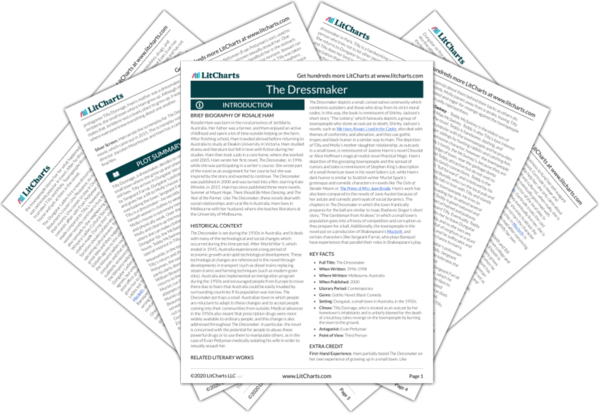Tilly, who once transformed Molly’s house for the better and made it a pleasant place to live, now transforms the house again when she destroys it. Before, the house represented Tilly’s hopes for her new life in Dungatar. However, the spiteful townspeople and Tilly’s own grief over Molly and Teddy’s deaths, dash these hopes and show Tilly that the Dungatar townspeople are incapable of changing or becoming more accepting of outsiders. Tilly still plans to make the Baroque costumes for the townspeople’s version of Macbeth because she knows that these costumes are from the wrong time period (Shakespeare wrote in the 1500s whereas the Baroque period was in the 1600s and 1700s). She wants the townspeople to make fools of themselves and show off their ignorance publicly at the performance.
